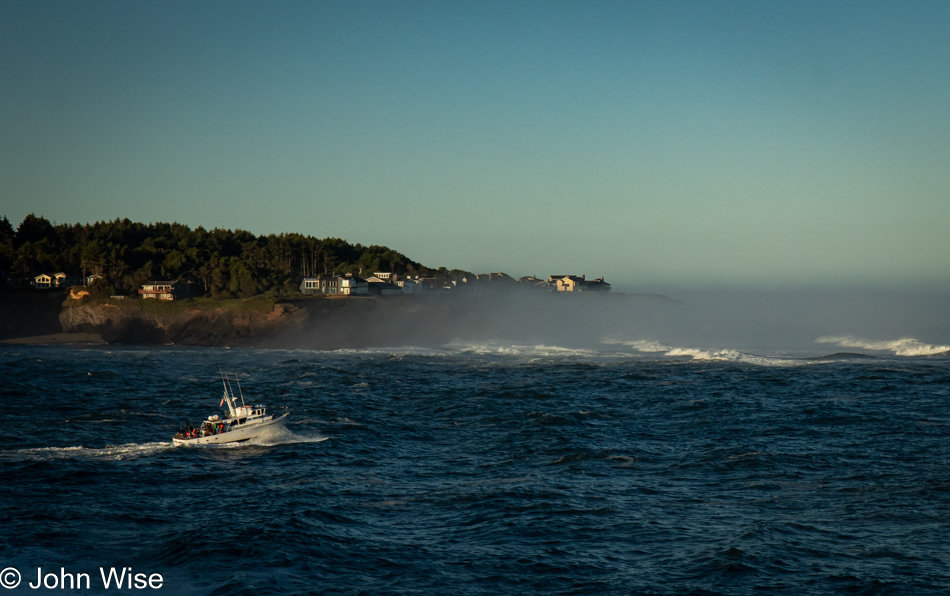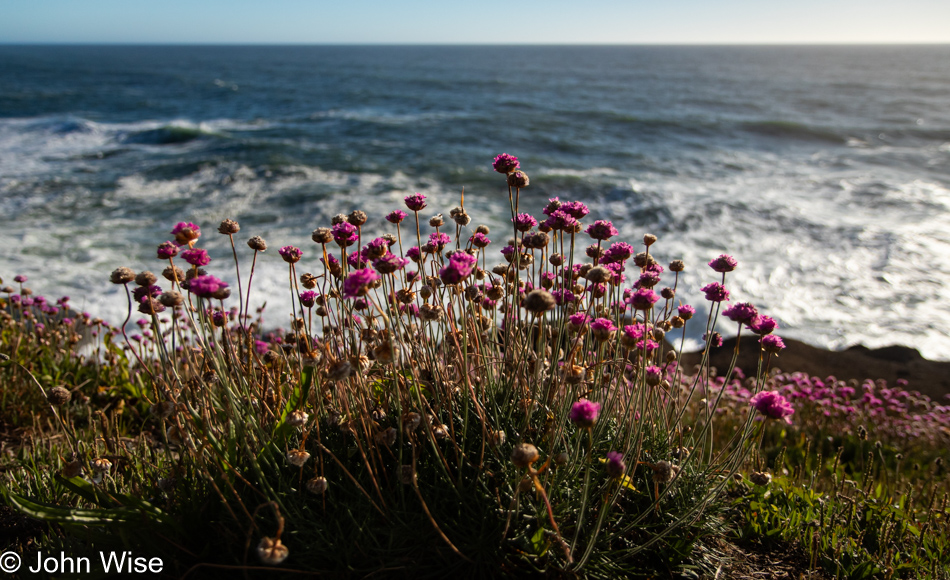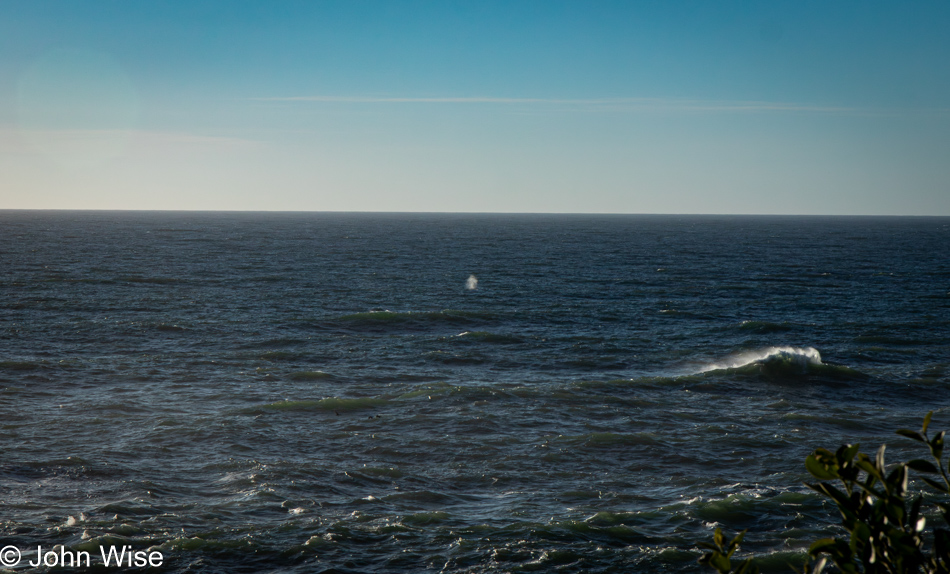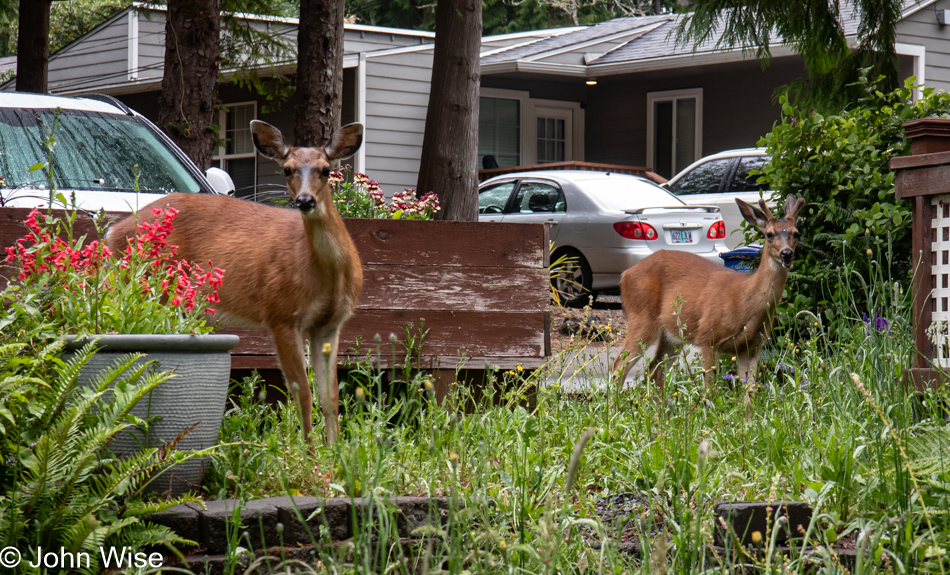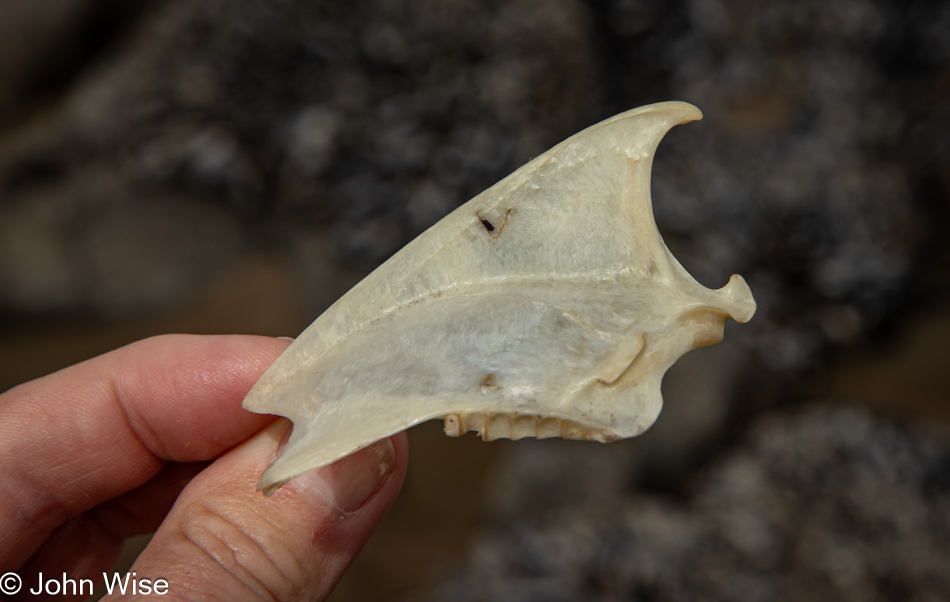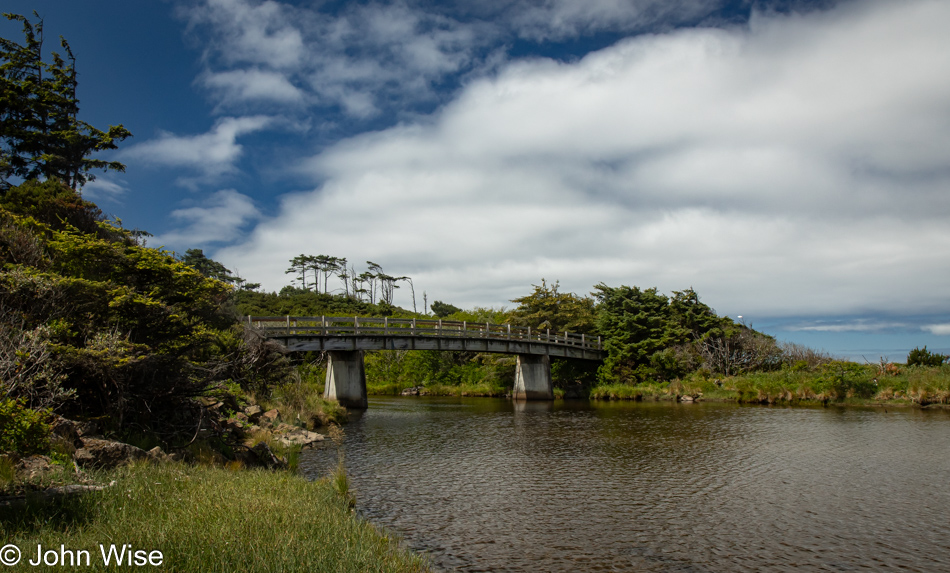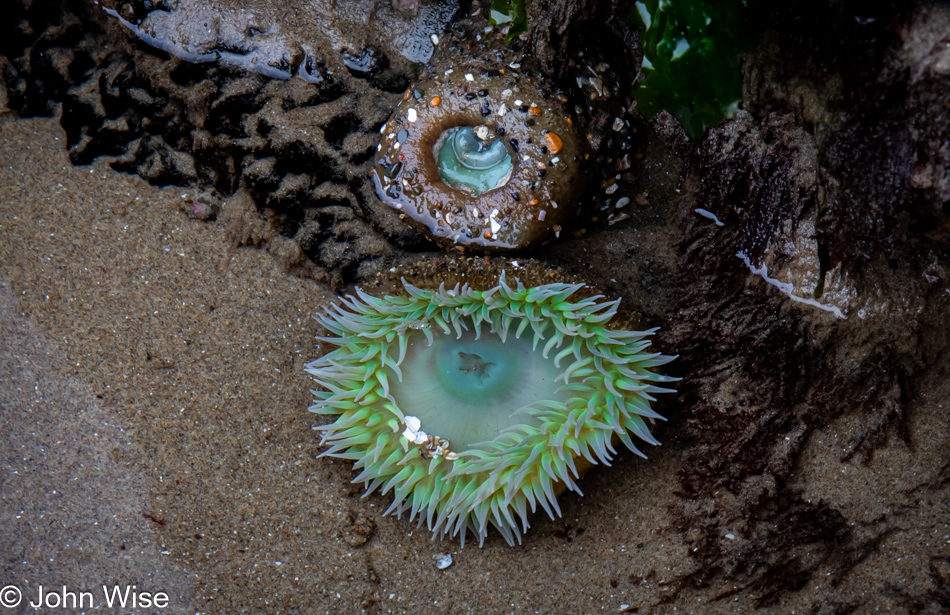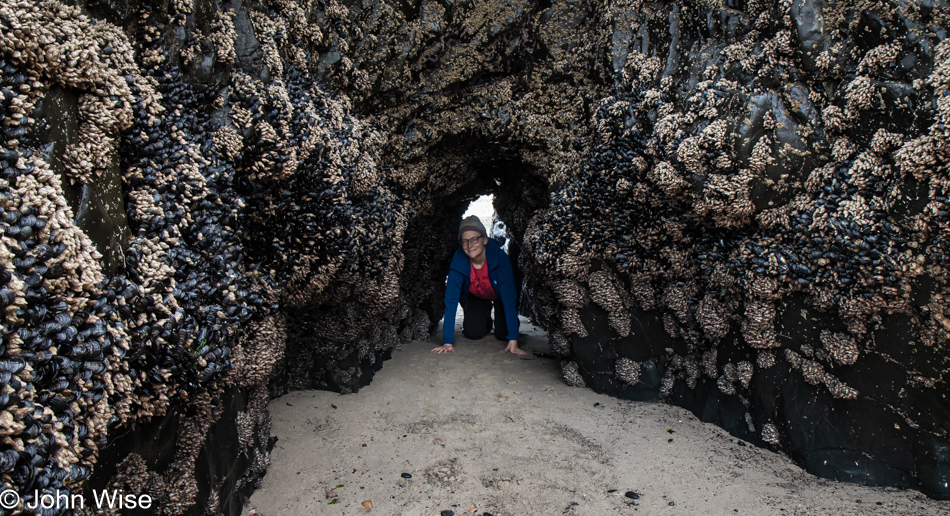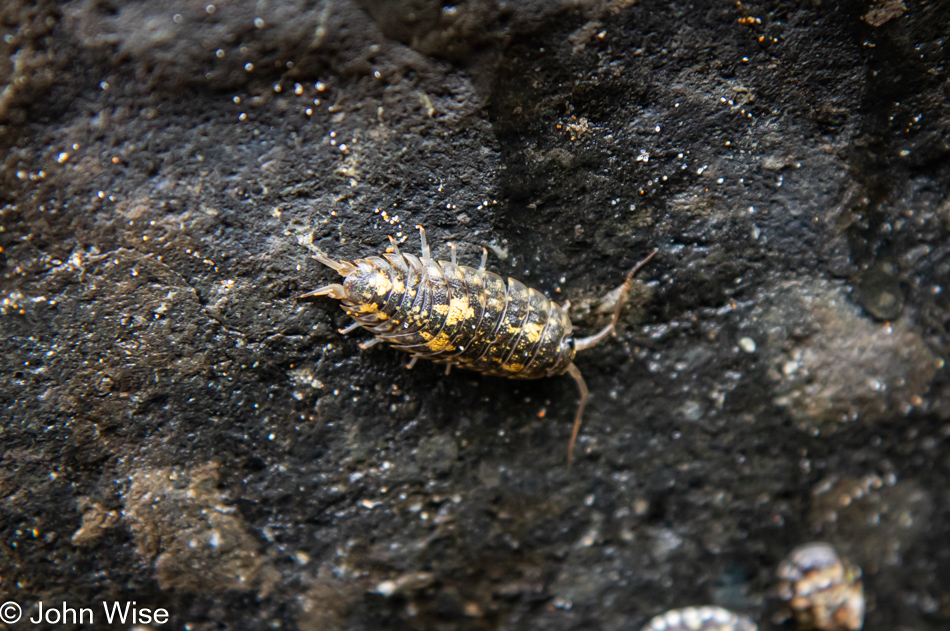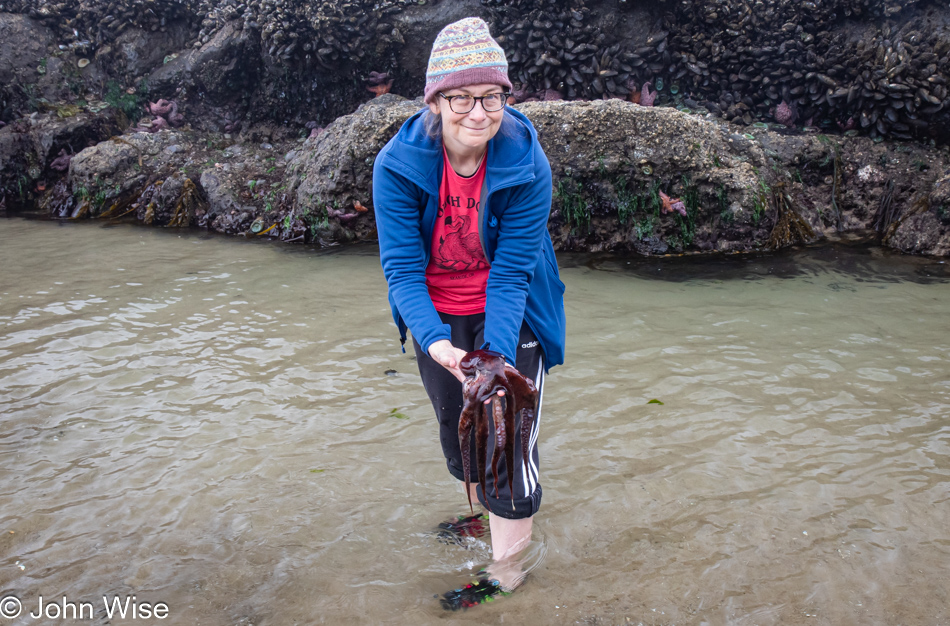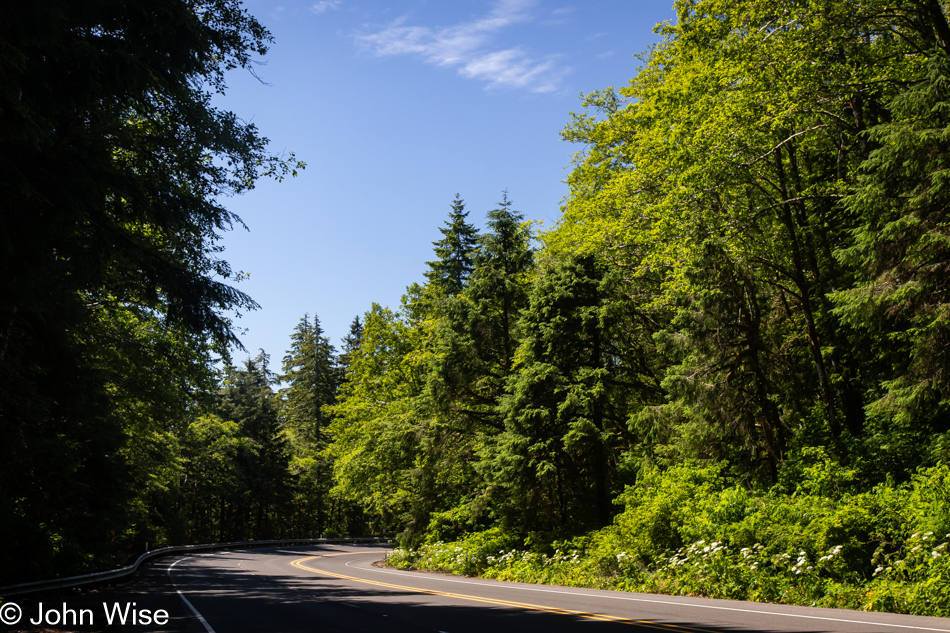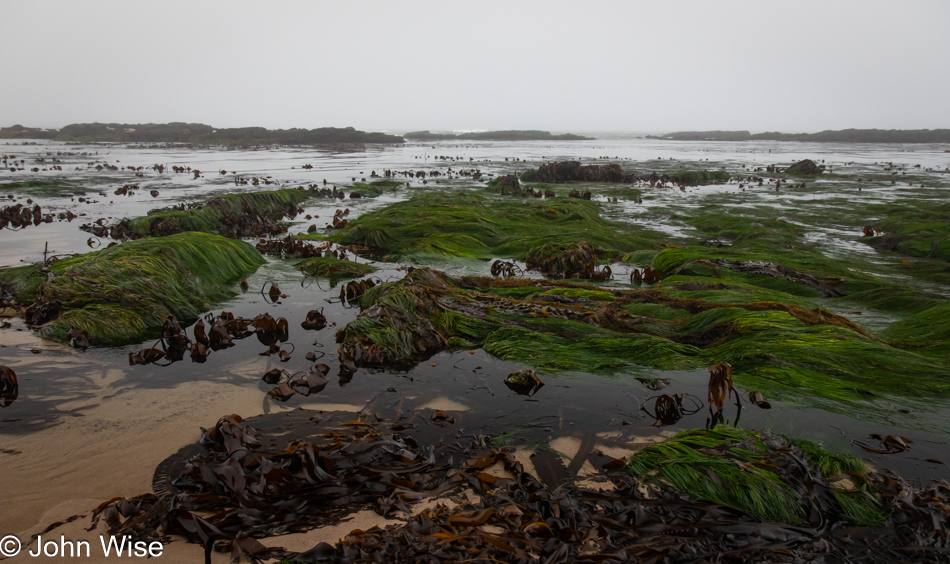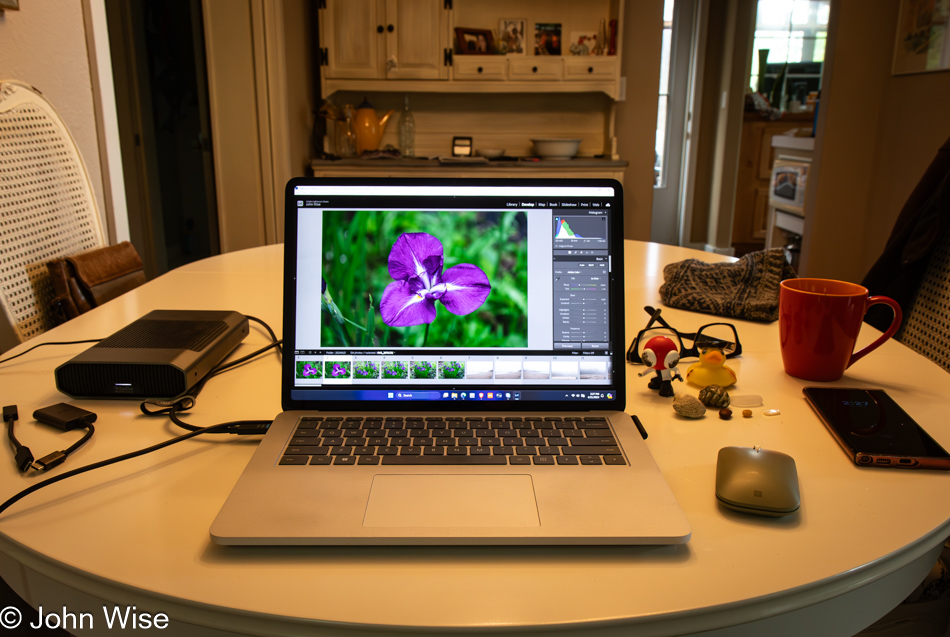
It’s cold out this morning here at Government Point, though no colder than other days, but there’s a steady breeze and a mist that is ever present on this 100% humid morning. There are three boats offshore out whale watching, and they were successful. We know this because we, too, were watching whales spout. It’s 9:00, and as I write this, it’s 55 degrees (13 Celsius) and raining here in Depoe Bay, Oregon, while at home in Phoenix, it just hit 100 degrees (38 Celsius). Caroline has taken up her place out on the veranda where it’s 59 degrees (15 Celsius) wearing her fleece, my fleece, and for a while, was wrapped in a warm towel.

As for me, I got in the car for a 40-minute drive south to Waldport. I was supposed to go last Thursday, but we’d been so immersed in exploring tide pools and collecting an abundance of photos that I knew I’d fall behind here on the blog if I didn’t get busy, which seemed more important than the tip we’d received about a local Waldport business. Back on that previous weekend, we’d stopped at the Tidewater Creations yarn store there in Waldport and were waxing on about our happiness at having visited Bread & Roses in Yachats when the owners told us that we should try nearby Pacific Sourdough Bakery, but we’d have to wait until the following Thursday as they are only open three days a week, Thursday, Friday, and Saturday and only from 10:00 to 3:00, and to arrive early because there’s always a line; always. We might have been incredulous, but their other tip, that JillyBeanz Ice Cream Shop sold an amazing tiramisu, turned out to be true, so we thought we should at least give this bakery a try. So, since today is Thursday and I’ve nothing better to do, here I am, heading down the foggy highway.

It was 10:03 when I turned the corner to this sight. I knew that this had to be the Pacific Sourdough Bakery. Being Oregon, the majority of people just stood there in the rain, though I’m surprised that no one was in shorts and t-shirts. I had to park down the street and put on my raincoat because, according to my wife, I’m made of sugar and would dissolve if I stood out there like the natives. Then I almost forgot my camera, so only a couple of steps from the car, I went back for it and hoofed back up the street, trying to get in line before the next half dozen joined the queue. There are 32 people there in line outside. Inside, there were somewhere between 10 and 15 others.

Almost 40 minutes later, it’s my turn in the bakery, and it’s a good thing there is a line inside, too, because there are so many choices for the first-time visitor. One needs a good 10 minutes to peruse the offerings before accepting the futility of the situation, which suggests it might be better just to order one of everything.

I took photos of the items with rhubarb in situ, knowing these would be the things that Caroline would likely cherish the most. In the world of baked goods, rye, whole wheat, sourdough, and rhubarb, in that order, are the things she likes most.

This French sourdough with wholewheat and rye was the first loaf we cut into. It’s unbelievable that a small town of just over 2,000 inhabitants should have a bakery that does better work than most all the bakeries in the greater metropolitan area of Phoenix, Arizona, with its over 4 million inhabitants; it is really a head-scratcher. Of the bakeries in Phoenix that are possibly comparable, their prices are twice what they are here, even though costs are similar regarding wages and facilities.

I took a similar photo on our first day in Depoe Bay after we arrived on June 10th. Every day, we drive up [or down? Caroline] this road on our way somewhere else, and there’s an enchantment that arrives with this first glimpse of the ocean, almost a surprise that it is so near.

Once again, we are walking the trail that traces along the coast between the coastal area in front of the harbor over to Boiler Bay. With almost two hours before the sun finally dips below the distant horizon, it will hang low and reflect brightly off the ocean, necessitating a hand to block the blinding column of light that makes whale watching difficult when they are close to that point in the ocean. The drama created by our star shimmering on the surface of the sea works to make the scene all the more alluring, as it demands our eyes to glance at its ferocity.

What you really couldn’t see in the wide-angle shot above this one were the seagulls taking late-day baths in the shallow pool. More than their bathing, it was the ripples emanating from their dips and wiggles that especially drew our attention. Now, we can study these beautiful patterns forever.
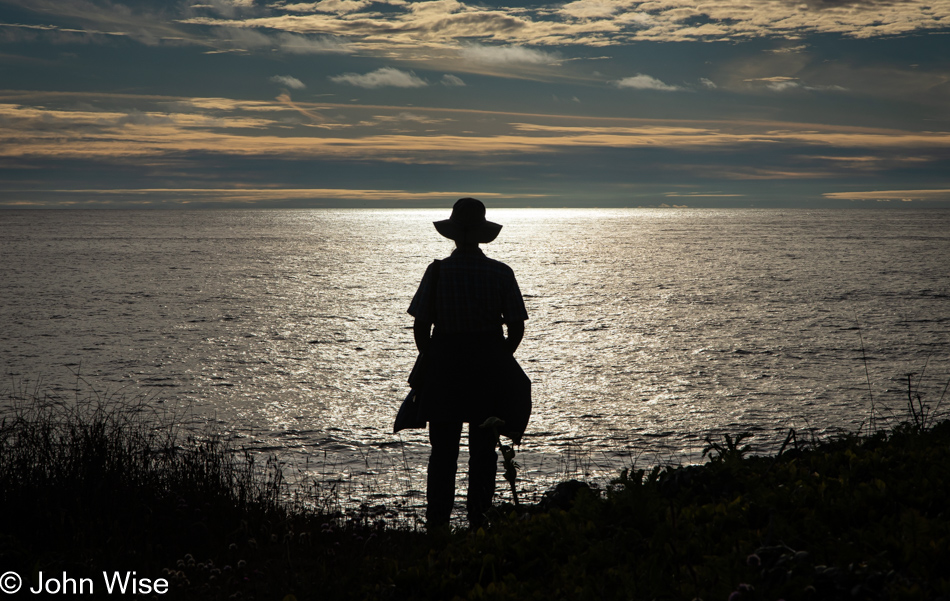
For the vast majority of the previous more than 30 years, every time one of us is looking at the Pacific Ocean, it is in the company of each other. There are moments that I’m not sure which I enjoy more, gazing out on its infinity or standing in awe of what is on the face of Caroline as she stares at the sea. Many women have the smile and intensity in their eyes when they are looking at a baby that I see from my wife as gazes intently upon any and all aspects of what the ocean is offering her. Under all circumstances, she’s obviously beguiled by the biggest to the tiniest of details. She loves the air, the clouds, the sounds of the surf and birds, inspecting the plants, turning over and collecting feathers, shells, rocks, and the abundance of trash that is scattered about. I sense that she feels some kind of kinship, a draw, a romantic notion that travels across time and the currents the ocean stirs.

The distance between summer and fall is a single transitional stage brought on by shortening days, but the visual delta between the two is a chasm where life seen between them couldn’t be more varied. We are seeing so much this June that we never see in November unless it’s the withering remains of plants and colors that are going to sleep for winter in order to come back strong the following spring. This here porcupine organic grenade is called a manroot, a.k.a. western wild cucumber, it is not edible and is wicked bitter, seriously not good eating.

Also, seriously not good eating is the seagull. Its ugly diet of everything and anything it can stuff into its gullet and fierce scavenging and busy flying schedule means the meat is tough and unsavory. These birds are so ubiquitous I just had to investigate their palatability.

Twenty years ago, Caroline bought a t-shirt from Sanctuary Whale Watching Cruises that says, “Whales are for Lookin’ Not for Cookin.’” We had the opportunity to try whale meat last year in Norway and ultimately decided against it. Maybe we are being hypocrites by eating some animals while putting greater value on others, but that’s a prerogative and respect for these mammals that can hold their breath on average for 80 minutes, dive as deep as 9,816 feet (2,992 meters), and have hearts that can pump up to 58 gallons of blood per beat (219 liters) while slowing from 20-30 beats per minute at the surface to as slow as 4 to 8 beats per minute while diving. They seem so highly evolved in respects I don’t believe we fathom yet, and to be witness to others seeing them for the first time, even at a good distance while on shore, it seems like they inspire things in people that transcend all of their other concerns, even if only for a few minutes.

This brings to an end our 17th day in Depoe Bay, Oregon, leaving a solid week before the road takes us south and we start our trek back to Arizona. Surprise, that Thursday (July 4th) and Friday, we’ll remain along the coasts of Oregon and California before cutting across California, avoiding Sacramento and Lake Tahoe on our way back into the desert of Nevada and skirting Las Vegas once more.

